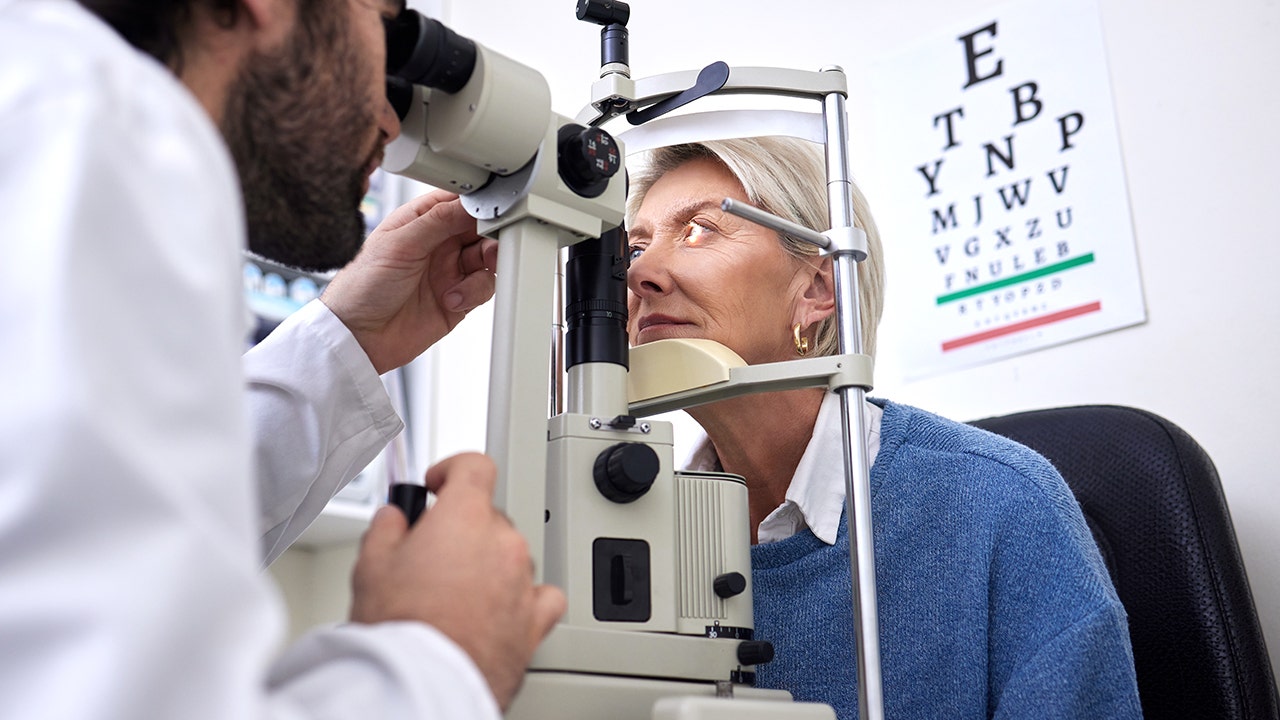NEWYou can now listen to Fox News articles!
A new study in The New England Journal of Medicine revealed that the PRIMA brain computer interface (BCI) retinal implant helped people with advanced age-related macular degeneration regain some central vision. The device uses a tiny 2 millimeter by 2 millimeter photovoltaic implant that is only 30 micrometers thick, and thinner than a strand of hair. It sits beneath the retina and works with a special pair of smart glasses. The glasses capture images and send them as near-infrared light to the implant. The implant converts that light into small electrical signals that stimulate the optic nerve. This process mimics how healthy retinal cells normally send visual information to the brain.
The study followed thirty-eight participants, thirty-two of whom completed one year of follow-up. Twenty-six patients experienced measurable improvement in vision, which equals about eighty percent of the group. Many participants could read letters, numbers, and even full pages of text again. Although the restored vision is black and white and slightly blurry, the results are remarkable for people who once believed they would never see clearly again.
WORLD’S THINNEST AI GLASSES FEATURE BUILT-IN AI ASSISTANT
Sign up for my FREE CyberGuy Report
Get my best tech tips, urgent security alerts, and exclusive deals delivered straight to your inbox. Plus, you’ll get instant access to my Ultimate Scam Survival Guide — free when you join my CYBERGUY.COM newsletter.
Why this matters for AMD treatment
Age-related macular degeneration, often called AMD, is one of the leading causes of irreversible blindness in older adults. Until now, available treatments could only slow down vision loss. None of them could restore what had already been lost.
The PRIMA implant takes a different approach. It directly replaces the missing function of the retina by turning light into electrical signals. Patients can still use their natural peripheral vision while the implant restores some central vision. This combination creates a more complete visual experience.
The trial showed that the surgery is generally safe. Most side effects occurred within the first two months and resolved soon after. Importantly, the implant did not reduce the patients’ remaining natural peripheral vision. Researchers call this a major step toward restoring sight rather than only slowing its decline.
The PRIMA implant was developed by Science Corporation, a brain-computer interface company founded by Max Hodak, who previously cofounded Neuralink. Science Corporation acquired the PRIMA technology from the French firm Pixium Vision, continuing its development toward clinical use.
EYE DROPS MAY REPLACE READING GLASSES FOR THOSE STRUGGLING WITH AGE-RELATED VISION LOSS

What this means for you
If you or someone you love lives with late-stage AMD, this breakthrough may offer real hope. For the first time, there is a device that can restore some sight instead of only preserving what remains. You may want to talk with your ophthalmologist about upcoming trials or future approval of the PRIMA system in your area. The company behind the technology has already applied for European approval, and a process with the U.S. Food and Drug Administration is underway.
Regaining even partial central vision can make a big difference. Reading text, recognizing faces, or simply moving independently becomes possible again. This progress also shows how fast medical innovation is moving. Patients who were once told that nothing could help may soon have a chance to see again.
It is also a reminder to stay informed. Treatments that were once experimental are becoming available sooner than expected. Discussing new technologies with your doctor helps you understand timing, eligibility, and what kind of results you can realistically expect.

Take my quiz: How safe is your online security?
Think your devices and data are truly protected? Take this quick quiz to see where your digital habits stand. From passwords to Wi-Fi settings, you’ll get a personalized breakdown of what you’re doing right and what needs improvement. Take my Quiz here: CyberGuy.com.
CLICK HERE TO DOWNLOAD THE FOX NEWS APP
Kurt’s key takeaways
The PRIMA retinal implant represents a shift in how scientists and doctors think about blindness caused by AMD. For decades, the focus was on slowing down the disease. Now, researchers are proving that restoration is possible. While this generation of the implant provides limited black and white vision, it gives real, functional sight to people who had none. That alone changes lives. More work remains to improve image clarity, color perception, and comfort. Still, this is only the beginning. Future versions of the device and smart glasses may make vision restoration even more effective and accessible.
If you could regain even part of your sight through new technology, would you take the opportunity and experience the world in a whole new way? Let us know by writing to us at CyberGuy.com.
Sign up for my FREE CyberGuy Report
Get my best tech tips, urgent security alerts and exclusive deals delivered straight to your inbox. Plus, you’ll get instant access to my Ultimate Scam Survival Guide — free when you join my CYBERGUY.COM newsletter.
Copyright 2025 CyberGuy.com. All rights reserved.
Read the full article here









